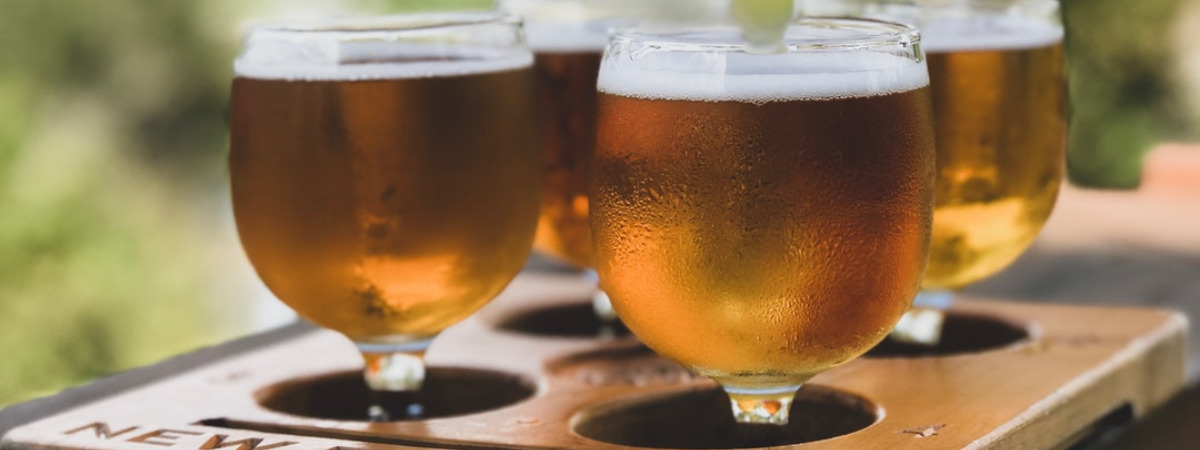All you have to do is look around at the number of breweries in Austin to know that beer is a big deal around here. Beer is to Austin what wine is Napa Valley, and people come from far and wide just to partake in the deliciousness of it all.
Here at Brewery Tours Austin, we spend our days and our nights driving people around so they can drink beer at the best breweries in Austin. Some of them are long-time serious beer drinkers, and some of them are newer at the whole beer-drinking thing.
We love all our passengers, but we have to admit having a limo full of newbies is really fun for us. They usually start out ready to drink beer but sort of intimidated by the idea of “beer tasting.” And by the end of our time together, they’re often giddy over terms like “hoppy,” “vinous,” and “mouthfeel.”
If you’re new to beer, beer tasting is a bit like learning a new language. At first, it may seem impossible to understand, but as you spend more time with it, the individual words become more familiar. Then, suddenly, you realize you just had a conversation in the language that was once totally unfamiliar to you. It’s the same with beer.
But, as with any new language or new skill, you have to practice. To hone your beer-tasting skills, you have to drink beer. (If only all skills could be learned by drinking beer, right?). The next time you drink a beer, slow down. Focus less on downing it and more on experiencing it. Use the following tips to train yourself to be a better beer-taster. If you want to get really serious about it, take notes.
Contents
Look at the beer
Before you do anything, hold the beer up and look at it through the glass. Note the color, head, and consistency. When you’re just getting started, you don’t have to know what these things mean. That’s beer-drinking 2.0. For now, just observe. This is especially helpful if you’re comparing beers in a beer flight.
Swirl the beer
You may have once upon a time looked at a wine drinker swirling the liquid in their wine glass and thought, “pretentious,” but there’s science to it. As you gently swirl the beer in the glass, it stimulates carbonation, allowing the beer to mix with air so you get a stronger sense of the aromatic components.
Smell the beer
Believe it or not, ¼ of your ability to taste is related to smell. Sniffing your beer is a big part of understanding and enjoying the experience. Try breathing in different ways: through your nose only, mouth only, and then both. While you do so, note the aromas (e.g. nutty, spicy, chocolaty, etc.). The prominent aromas of beer usually come from malt and hops.
Taste the beer
This is probably the part you’ve been waiting for, but don’t rush through it. Let the beer linger in your mouth so you can really taste it. Note the levels of sweetness, saltiness, acidity, and bitterness. Again, when you’re a beer newbie, a beer flight is a great tool for comparison tasting. (For a serious selection of Austin beers to compare, spend a day or a week at Stone Brewery Escondido).
Want to take it a step further?
Hops: Flavor and aromas
Sniff or taste the following to get a sense of the range of citrusy and “green” (herbal) flavors and aromas that hops can impart to beer:
Grapefruit wedge
Fresh pine needles
Black peppercorns
Fresh-picked grass
Freesia
Thyme
Sage
Put a check mark next to the ones you enjoy. The more you choose, the more you will like an intensely hoppy beer.
Malt: Flavor and aromas
When it comes to malt, the darker the roast, the deeper the flavors. Taste the following:
Malt ball candies
Brewed coffee
English toffee
Pecans
Slice of toast
Dark chocolate bar
Dried cherries
Put a check mark next to the flavors you enjoy. The more you choose, the more likely you are to appreciate an especially malty beer.
Practice makes perfect!
At Brewery Tours Austin, we’re committed to helping you become the best beer taster you can be. And what better way to get really really good at it than touring Austin’s best breweries with us? We offer public and private tours.

